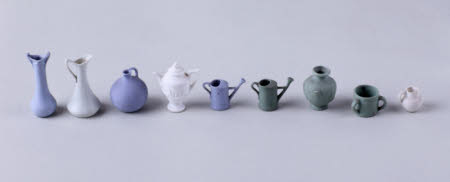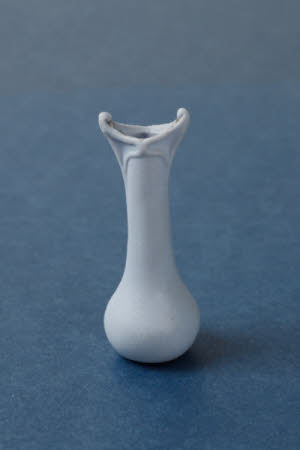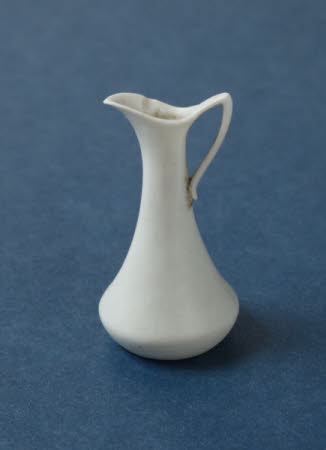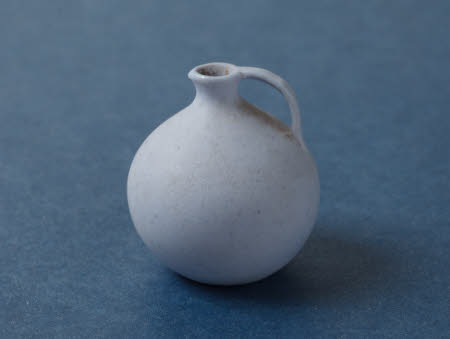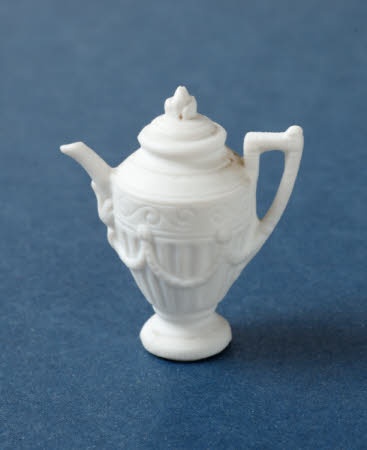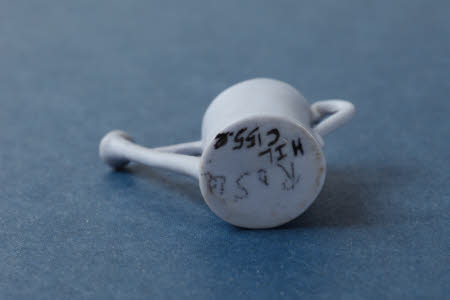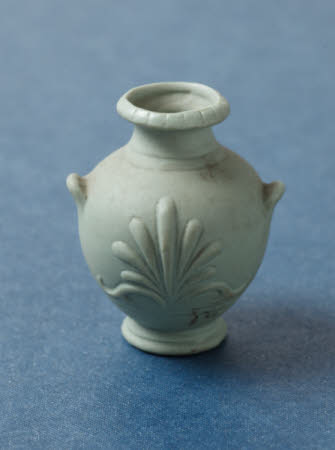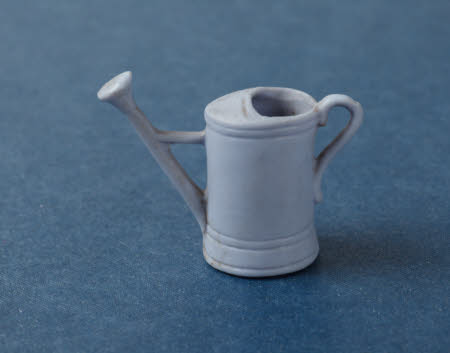Miniature vase
Category
Ceramics
Date
1900 - 1910
Materials
dry bodied stonewares
Measurements
56 mm (Height)
Order this imageCollection
Beatrix Potter Gallery, Cumbria
NT 641520
Summary
A group of nine miniature vessels, green, white and blue dry bodied stoneware, British, Italian and Belgian, 1900-10.
Full description
These tiny vessels are part of the collection at Hill Top. Beatrix Potter purchased this farmhouse in the Lake District village of Near Sawrey in 1905, using the profits from her books. After her marriage to William Heelis in 1913, Beatrix relocated permanently to Sawrey. The couple made nearby Castle Cottage their home, but Beatrix spent as much time as she could at Hill Top. As well as a space for work and creativity – and the location for many of her famous tales – it became an intensely personal sanctuary for her. Beatrix knew exactly how she would decorate Hill Top and she arranged its interiors carefully and deliberately. She wrote: ‘I would have old furniture…it is not as expensive as modern furniture, and incomparably handsomer…’ Once she had renovated the farmhouse, she filled it with examples of local furniture and treasured heirlooms, like her grandmother’s warming pan and a set of plates decorated with designs by her father. When sorting through her possessions at Hill Top, Beatrix sometimes attached notes to the backs of pictures, slipped them into books or other things that had a special interest. This group of tiny watering cans, vases and jugs are mentioned in a note in the archive written by Beatrix, which reads: ‘Very fragile tiny vases and pots. All modern. Lift out with care. Mostly bought in Oxford, Winchester. A few glazed ones in Bruges & Pisa –R. Owen. Feb. 17’ (NT 242437). Rebecca Owen was an American friend of Beatrix, who lived at Belmount Hall in Hawkshead, a village near to Sawrey. Beatrix is known to have bought some pieces from Rebecca, including American furniture. Perhaps some of these miniature ceramics were a gift from Rebecca, or bought from her. Beatrix did not travel overseas, so it must have been Rebecca who purchased the some of them in Italy and Belgium. A pencil note on the underside of one of the tiny watering cans reads ‘Rosie’ (NT 641520.5) and another is initialled in Beatrix’s hand, ‘F.R.B. / Feb. 6. / 1905’. (NT 641538.5). The former might refer to Rosie Carter, the sister of Beatrix’s governess, Mrs Moore. Beatrix wrote Peter Rabbit, The Tailor of Gloucester and Squirrel Nutkin for Mrs Moore’s children, Noel, Freda and Norah. Was this watering can a gift from Rosie? The meaning or identity of ‘F.R.B.’ for now remains a mystery, though the year 1905 was a significant one for Beatrix, as she became engaged to Norman Warne before his sudden death, she purchased Hill Top and also began a productive period of writing.
References
Conroy 2023: Rachel Conroy, ‘A love of ‘old china, especially earthenware’: ceramics at Beatrix Potter’s Hill Top and in her ‘little books’, Transactions of the English Ceramic Circle (Volume 34, 2023), 95-112
